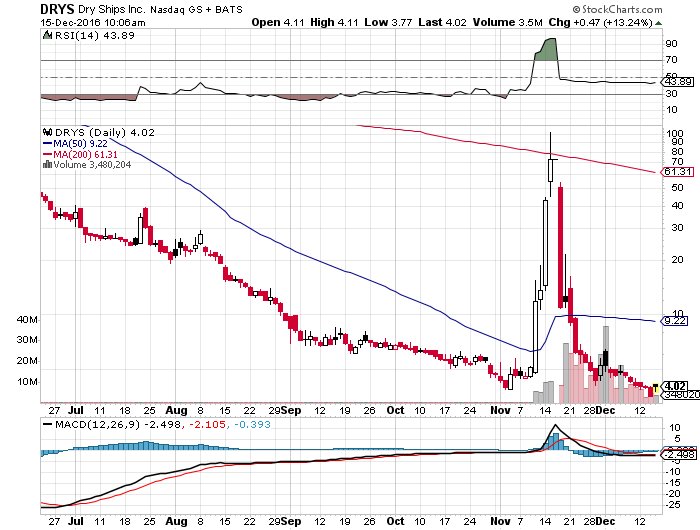Alex Temiz is a 25-year-old day trader who has made over $10 million in verified profits, day trading penny stocks. Learn how he did it in this interview with SMB Capital, a prop firm in New York City.
Key Takeaways
Aspiring day traders should focus on the following:
-
- technical analysis
- fundamentals
- tape reading
- practice and be patient when learning to day trade
- use free resources such as YouTube and Twitter to gather information
- hard work and dedication are key to becoming a successful day trader
Introduction to Wall Street
Alex got into trading around 2015. Before that, he worked at Starbucks. His girlfriend dumping him led him to this profession–he wanted to get rich. And, yes, part of the reason was that she was attractive. He talked about it; hot girls tend to date guys with money. From watching Wall Street movies, he knew those men in suits driving nice cars weren’t any dumber than he was–maybe even less so. So he took the plunge and threw himself entirely into learning everything there was to know about trading.
He found some of these online gurus that everyone else gets drawn into and falls into their trap. He lost money his first year buying the breakouts – buying at the highs and selling at the lows. And he started to recognize that if he didn’t change what he was doing, that was it for him.
Alex wasn’t making that much money – around $100 a week. And if he put $60 towards gas and the rest of his girlfriend, he didn’t have much money left. So it took him breaking up with her to start accumulating some money. And then, he started finding success when he sold the wheels on his car for $2,000 and funded another account with the proceeds.
Alex’s First Profitable Day Trade
He was losing money with every trade because he had no discipline, plan, or idea of what he was doing. He winged it and chose trades based on intuition rather than a pre-determined strategy. After discovering short-selling stock, he understands the importance of having a plan and attack strategy and knowing your technicals and fundamentals.
Someone mentioned to him that you could make money when stocks go down. He thought, “every time I buy stock, it goes down anyway. You know, let me do the opposite.” And that was it. For his first short trade, he shorted 2000 shares of a stock called VGGL, and it dropped $0.50 instantly.
He made $1,000 in seconds. He thought, “wow, I got it. Shorting is the Holy Grail, and I found it, boom!” After that trade, he began to refine the strategy by asking himself, “what caused the drop? Was it technical or fundamental? What was the reason for it?” He started getting a bit better, but then he realized he had no risk management.
Risk Management
Risk management is essential when day trading. You will quickly lose money if you do not have a plan to manage your risk. Alex Temiz learned risk management the hard way, losing money in his early trading days. He started to make money once he began implementing a risk management plan, which included stops and limits. He could protect his profits and avoid large losses by managing his risk.
If his plan was “short a daily resistance at $5,” he would short near that number. And if the next resistance was $6, he would make sure to have a stop at a point. That wasn’t always the best approach, though. He eventually found himself adding to losing positions and refusing to stop out until he couldn’t stand to lose any more money. He eventually got better at reading the tape, technicals, fundamentals, and everything else.
Tape Reading
He realized that the tape tells a story; everything’s about the tape. He sat at his desk for hours, watching the tape till his eyes nearly bled. He said in the interview, “even today, like, I didn’t want to trade today, but I was watching. I cracked open a beer, watching the tape to see what I could find.”
Since he started perfecting his skills at reading the tape, he has seen the following:
- $650,000 profit in January
- A win streak lasting 33 days, earning around $300,000.
Sympathy Stocks
When everybody was trading Dry Ships ($DRYS) in December, how did you know you should look at the sympathy plays—the secondary stocks?
Alex explains to the interviewer, “once you cut off the head of the snake, which was $DRYS, all the other ones should fall.” He started to realize that was a game changer for him. There is a lot of money to be made on stocks that people aren’t watching as closely. How many times have you traded a stock, only to see it three or four days later do what you wanted because everyone forgot about it? You’ve seen it quite a bit, surely. This is the beauty of the sympathy stock.
When $DRYS collapsed in November 2016, around $100, all the other shipper stocks weren’t going to sustain themselves. Once the head of the snake is cut off, the rest of the sympathies will follow suit.
Alex had one of the best days in his trading career when the shipping stocks crashed. It shows that making a plan and knowing which stocks to attack and which stocks to avoid is the secret to great day trading.
Pattern Recognition
Alex started to realize after seeing these patterns happen over and over and over again; he could start to capitalize on them. For example, $DRYS was up 100%. It was easy to borrow almost everywhere. There was a midday downgrade that trapped a bunch of people. And then it went straight up on air during the last 30 minutes of the trading day. It’s also good to know the sentiment in the market. Everyone on the internet is getting into being short, so everyone wants to short everything. So most of their brokers are not allowing borrows of some of these low-float stocks.
Seeing that it’s easier to borrow, seeing that people are in a market they want to short, and they’re getting FOMO, and they’re getting antsy, we can capitalize on that information.
Buy Stocks When Everyone is Shorting
Alex, recently you wrote in a tweet that you want to start working on your long game. Anything specifically you’re doing to think about how you can get better at your long game for some of these opportunities?
You can’t read about doing push-ups. You don’t go to a basketball school. You play basketball to get better at basketball. This applies to trading stocks as well. No matter how many books you read or videos you watch, you will not succeed until you dive. Start recording your trade ideas and track your performance. You will likely lose money initially if you don’t track the trade ideas or paper trade. Be patient and practice. Once you go live with real money, you will have a much better chance of success as a day trader.
When you have stocks like $DRYS, as terrible as these stocks are, they went from $6 to $100. Stocks can quickly go from $0.50 to $2.50. There’s money to be made in the market as a long. If you’re not both a long and short trader, you’re missing out on a lot of money that’s out there. It would be best if you strived not to miss out on anything. You deserve a piece of all of it. The only way you’ll get a piece of it is if you start to learn how to do all of it.
The best teacher you can have is doing it yourself and learning from your own mistakes. A mentor or teacher can only take you so far. Eventually, it is up to you to succeed. Because no matter how many books you read about risk management, no matter how many videos you watch on the Internet or YouTube until you’re sitting there with a chart and a level two and all the buying power in your face, you don’t know what kind of way you’re going to react in that situation.
Be Green on the Day and Follow Your Plan
While it’s important to be green on the day, it’s about making sure you follow your plan. If you’re green on the day but have not followed your plan, you are building a bad habit. Stubbornness, greed, and ego are dangerous characteristics to have as a person and even more as a day trader. You want to make money because you followed your plan and did what you were supposed to do.
If you’re following your plan and lose, that’s a winner. It’s easier to adjust a losing strategy and turn it into a winning strategy. When you stop following your plan, you’re gambling. And if you win when you’re not following your plan, the greed and adrenaline kick in, and you start to push the gas pedal on trades with no plan. This could lead to a snowball effect on your losses.
Trust your process. How many times have you been in a trade only to freeze up or not know how to attack? If you find yourself mentally freezing up for every trade, understand that this is normal, and every trader has experienced it. However, this is also a subconscious sign that you don’t trust your process. You must be all in on your approach. So if you’re hesitating and panicking or not doing what you’re supposed to, it means that you still don’t trust your process. You still don’t trust what you’re doing.
Set Goals as a Day Trader
Day trading is not about making $100,000 in one day. It’s about making money every single day, no matter how much. It’s about coming to the market and being able to pull money out of it every single day rather than having that one giant winner. Anyone can make money in the market once, but very few can make money every day. So I think it’s straightforward to make money in the market.
Not many people can keep that money if they make a big win once, and many people start to get egotistical and lose it almost instantly. There’s always that one trade that could kind of change you. So set your goals as a day trader, stick to your plan and strategy, and don’t waver.
Wake Up Early and Plan Your Trades
One of the most important habits of successful day traders is waking up early. This allows time to review your past trades and plan for the day ahead. Waking up early makes you more focused and productive throughout the day. It’s essential to start your day with a clear head and get organized for the day’s trading.
Alex wakes up at 5 AM EST every day, goes to the computers, and starts looking at which stocks are gapping up the most. Next, these small-cap companies, a lot of them are shady, and they released the same news six months ago.
- Check the catalyst behind the gap. Has the company released this news before? And what happened the last time they released that news?
There is a big edge in these penny stock fundamentals. Make a habit of checking these things for anything you plan to trade:
- Check the size of the float. We use FINVIZ to check. Is it a low float, high float, or institutionally owned?
- Check the filings. We use BamSEC. Are there any at-the-market offerings (ATMs)?
- Check their cash situation. Do they need cash, or are they cash-flush?
If the company needs cash and the stock is gapping up, and there is an active ATM, the company might have released the news to sell the shares they already registered in the ATM. So, the stock will gap up and attract buyers looking to day trade the momentum. As soon as the market opens, the company dumps the shares into the buying volume provided by retail day traders ignorant of the fundamentals and motives of these penny stock companies.
Start with the technicals from the daily chart. Check for support and resistance levels on the daily, and see what levels gave the stock the most trouble last time. Now, look at the intraday chart and see if the chart respects those support and resistance levels. If the chart looks like it respects the resistance levels you chose, choose a risk to be your stop-loss if you are wrong. Your plan should look something like this:
Plan: $5 is a resistance, and the company has an ATM and needs cash. I should base my entries on $5, stopping above $5.25.
Once the trade has occurred, track it! What happened? Were you right or wrong? Green or red? Did you follow your plan? These are a few things to consider when reviewing your trades. Check out this blog post about trade journaling and reviewing your day trades for a more comprehensive list of what to track.
Scaling Your Day Trading Strategy
So once you find a strategy that works for you, once you see that it’s been bringing you profits consistently, you have the permission to scale up your share size. Sizing, as we say, is not easy, and a lot of stuff goes into it, and there’s slippage and emotions.
If you’re losing $1,000 on every tick that the stock is moving, every penny that the stock is moving, there’s going to be heightened emotions. There are going to be some people that can’t handle the swing. Some people are going to freeze when the stock goes against them. It’s not an overnight process. It’s not an easy process. It takes time to build the emotional maturity to handle those emotions. It takes refining your strategy to be comfortable with it.
So sizing isn’t a matter of doing it. You have to earn the right to size up, and you have to start to realize that once you size up, there’s no going back. Going back to making $100 won’t feel challenging anymore. Those big profits intoxicate people, so they try to dive into it before they’re ready. Please don’t do it until you’re ready for it. Don’t do it until your strategy is working for you. Because, as we said, you’re not going back after that.
Focus on the trade rather than the money, and you will find you can scale your strategy more naturally.
How to Handle Big Losses in the Stock Market
Let’s say you had a big loss. Most day traders would say, “I’m always right, you can’t beat me. I’m going to come back, and I’m going to take my money.” That is the wrong mentality. The market is always right. Jesse Livermore, the acclaimed “pioneer of trading,” was quoted as having said, “Markets are never wrong – opinions often are.”
Respect the market and stay humble or the market with humble you, whether you like it or not. Take some time away from the market if you have a large loss or a string of losses that amass to a large amount. The market will always be here. There will be more opportunities in the future. Take some time to hang out with your friends or family. Come back to reality and clear your thoughts and emotions.
To hear the full interview, you can watch the video here.
Bottom Line
Day trading can be profitable, but it’s important to remember that losses are part of the game. If you find yourself on a losing streak, take some time away from the market to clear your head and come back with a fresh perspective. The market will always be here, so there’s no need to worry about missing out on opportunities. Good luck and happy trading!
What’s Next?
Join our next free 1-hour webinar, where Alex will teach you his strategies and how you can use the same ones he has used to make more than $10,000,000 over the years.




